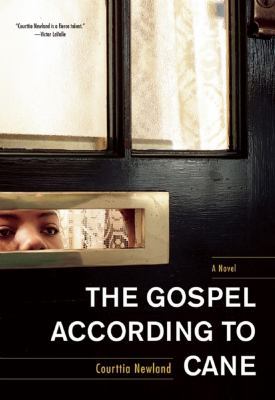10. A book written in Europe: The Gospel According to Cane by Courttia Newland

List Progress: 2/30
I am a sucker for the overlap between family dramas and mystery/crime dramas. Shows like Broadchurch and The Killing introduce normal nuclear families and immediately crack them open with unspeakable trauma and I eat it up. The Gospel According to Cane, a 2014 novel by British writer Courttia Newland, takes a slightly different approach in that the trauma is old and, if not healed, deeply scabbed over. Beverley, a 40-something woman in London, had her infant son kidnapped twenty years ago, and she has been a festering wound of a person ever since. When she starts being stalked by a young man, that wound is reopened when he approaches her and claims to be her long-lost son. She immediately believes him, rejecting everyone else in her life who questions that possibility, asks for proof, or thinks she is being duped, and she becomes so immersed in this possibility that it is obvious that the mix of pain and frantic hope is destroying her.
That’s a lot of emotion to hang on a story. Unfortunately, Newland’s structure leaves something to be desired and the emotional sweeps end up feeling under-served by the story and characters holding them up.
The Gospel According to Cane is presented as Beverley’s diary and is written out of sequential order, snatches of memories, dreams and to-do lists interspersed with narrative scenes. (Dialogue is even integrated into the prose rather than set off with quotation marks, which takes a while to get used to as a reader.) This works well in the beginning when we are getting a lush depiction of Beverley’s mind, her life, and her conflicted feelings about her heritage and privilege, as a light-skinned middle-class woman of Bajan descent living in the UK and working with underprivileged youths. But as the book goes on, it feels like Newland is stalling, holding off vital plot points until the last possible second and forcing characters to stay stagnant for long stretches of time so that they don’t rush into the next story beats. Then the payoff isn’t all that great and you find yourself wondering why you waited so long to get here. In order for the plot to function, many characters have to ignore obvious things, avoid natural conversations, and act very unnaturally, which leaves a very flimsy structure to build around.
This book has a lot of lovely moments, including some genuinely heartbreaking details and writing. But it feels like it needs another draft and an outside perspective willing to push some of the character arcs. Why does Beverley’s neighbor not confront her for so long? Why does Beverley’s police officer boyfriend go along with her absurd requests? So many questions, and while some are clearly left unanswered for thematic reasons, some really should have been pushed back against. The question can still be there, it’s all a matter of how you justify it.
Would I Recommend It: Not really, but there is some interesting stuff here.